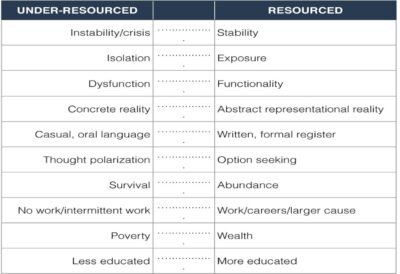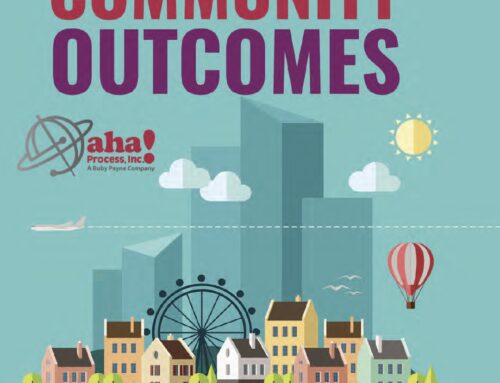That employee working the front line at $15 an hour… The employee who asks for a cash advance… Or the employee who sits in the break room during lunch but doesn’t eat…
—That demographic of employee…
 Many entry-level employees are coming to our workplace from lives of daily instability. This means that some of our employees barely have enough resources for today, let alone tomorrow.
Many entry-level employees are coming to our workplace from lives of daily instability. This means that some of our employees barely have enough resources for today, let alone tomorrow.
When those individuals become our employees, they will many times bring with them different mindsets, habits, and patterns because of their reality. When you live in an environment of never having enough, then you are living in the tyranny of the moment with a scarcity mindset, making “things” work for the day. “Things” might be visiting a nonprofit for assistance with food or electricity, a flat tire, or a sick child, and that employee works on the front line and can’t work from home. In this environment you depend on relationships—with neighbors, siblings, aunts, uncles, etc.—to make it through the day.
Business and leadership operate from a different mindset: that of achievement and work. In this set of rules that business lives by, the mindsets, habits, and patterns are different because there are enough resources for the day and for the short-term future. Time is spent on achieving for ourselves and our children, and our careers are very important to us.
As a business, if we provide supports to our demographic of employees that come from daily instability, is it good business or social justice?
Good business keeps, retains, and grows employees. The research indicates that when we lose entry-level employees, we will more than likely hire new employees with the same mindsets, habits, and patterns as the employees we lost.
Good business recognizes the shift in demographics and the available individuals in the labor pool. In this realization, employers have policies to keep, retain, and grow employees. Great leaders don’t just manage people and processes—they help develop employees, all employees.
Good business understands that employees come to work with differences and that those differences bring distinctive mindsets, habits, and patterns to the table. Those differences bring different ways of solving problems and communicating, and they allow for more ideas and processes. Dare we say that our differences can increase productivity because of what is listed above?
Not only does good business look at race, gender, and sexual differences, but it also looks at economic class differences. Our employees who are working to stabilize their lives each day come with both barriers and qualities. With those barriers and qualities, there are benefits to be had, including improved procedures and training and better interpersonal relationships. Through all these, we can have employees who can be retained and developed within the company.
 When we look at the chart, we recognize that life is not the same for all our employees. Because of their economic situations, some employees have more challenges in getting to work and staying at work than do others. Employees with daily instability have tools they bring with them to the table; however, their gifts often need to be cultivated, and they need to be shown that they are strengths, not weaknesses.
When we look at the chart, we recognize that life is not the same for all our employees. Because of their economic situations, some employees have more challenges in getting to work and staying at work than do others. Employees with daily instability have tools they bring with them to the table; however, their gifts often need to be cultivated, and they need to be shown that they are strengths, not weaknesses.
This is a short list of what I’ve seen good businesses doing:
- Providing ramen noodles in the breakroom for those who do not have the resources to bring or buy lunch each day
- Offering employee-provided food banks during the weeks opposite of payroll for employees who need assistance
- In cooperation with a credit union, providing small dollar loans of $750–$1,000, without a credit check, for those employees lacking the resources to provide for an emergency
- Providing a success coach who is available to help employees solve life issues while at work, keeping employees at work and productive
- Providing educational opportunities in conjunction with a local community college
- Offering schedule flexibility, which allows for employees to better balance life against work
When we understand the environments our employees come from, we understand that it is simply good business to use that knowledge and to make decisions that create more scalability, growth, and higher productivity than our competitors.
Learn more about Workplace Stability: Creating Conditions That Lead to Retention, Productivity, and Engagement in Entry-Level Workers for strategies and tools that will work with your entry-level employees. Contact aha! Process at (800) 424-9484 to learn about our consulting and training solutions.
Source for chart: A Framework for Understanding Poverty (Ruby K. Payne)








